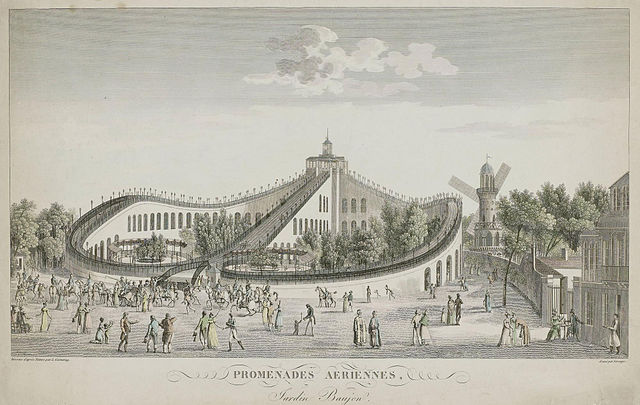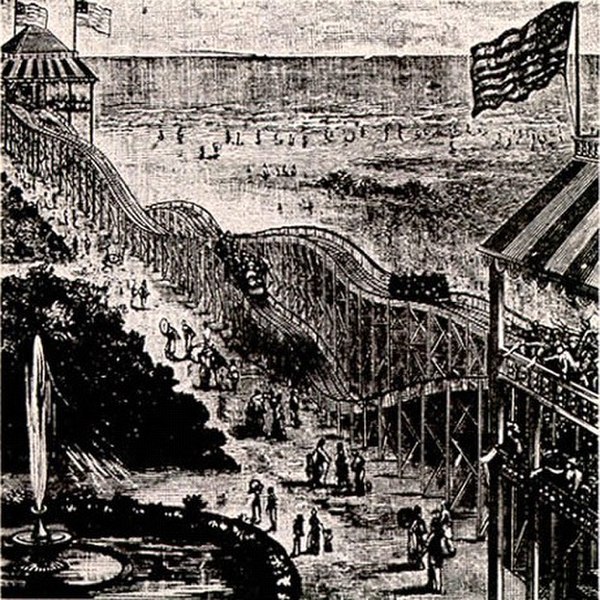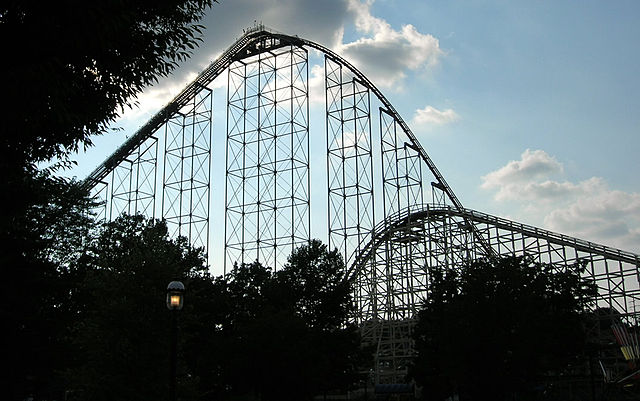A lift hill, or chain hill, is an upward-sloping section of track on a roller coaster on which the roller coaster train is mechanically lifted to an elevated point or peak in the track. Upon reaching the peak, the train is then propelled from the peak by gravity and is usually allowed to coast throughout the rest of the roller coaster ride's circuit on its own momentum, including most or all of the remaining uphill sections. The initial upward-sloping section of a roller coaster track is usually a lift hill, as the train typically begins a ride with little speed, though some coasters have raised stations that permit an initial drop without a lift hill. Although uncommon, some tracks also contain multiple lift hills.
The lift hill of Nitro at Six Flags Great Adventure
The cable lift tensioning mechanism on Millennium Force at Cedar Point
A roller coaster is a type of amusement ride employing a form of elevated railroad track that carries passengers on a train through tight turns, steep slopes, and other elements designed to produce a thrilling experience. Trains consist of open cars connected in a single line, and the rides are often found in theme parks around the world. Roller coasters first appeared in the 17th century, and LaMarcus Adna Thompson obtained one of the first known patents for a roller coaster design in 1885, based on the Switchback Railway which opened a year earlier at Coney Island.
The Scenic Railway at Luna Park, Melbourne, is the world's second-oldest operating roller coaster, built in 1912.
The Promenades-Aériennes in Paris, 1817
Thompson's Switchback Railway, 1884
Steel Force (left) and Thunderhawk (right), two roller coasters at Dorney Park & Wildwater Kingdom in Allentown, Pennsylvania. Steel Force is the eighth longest steel roller coaster in the world.






